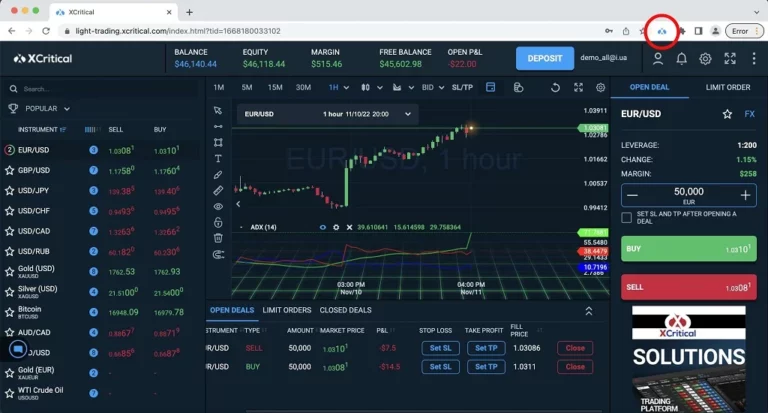Content
Today, when pfof meaning you open an account, your broker must tell you if it engages in this practice. It also has to provide updates on an annual basis concerning any changes to its PFOF practices. Alpaca Securities receives payment from Virtu Americas, LLC, Citadel Execution Services, and Jane Street for directing equity order flow as of today (November 2nd, 2021).
Lower commissions and fees, price improvement
The clearing firm is responsible for making sure everything goes smoothly between the brokerage, market maker, and exchange. This led to exchanges competing for where options trades should be routed, including giving rebates or incentive payments to https://www.xcritical.com/ the broker or customer for directing their order accordingly. The previous year, the SEC fined Robinhood $65 million for failing in late 2010 to properly disclose to customers the PFOF it received for trading and for failing to execute the best trades for their clients. For instance, regulations already require brokers to search for the best trades for their clients. While some have suggested that the SEC should do more on this front, it’s not too difficult for regulators and individual clients to assess because the data for trades executed can be compared with the posted spreads. Nevertheless, brokers have a strong incentive to encourage more options trading, especially in a zero-commission trading environment.

The Impact of Payment of Order Flow on Trading Strategies

An inverse head and shoulders pattern is a technical analysis pattern that signals a potential… But just because the average investor’s order is filled at a slightly better price does not mean they reap the rewards from PFOF. Capital Com Online Investments Ltd is a limited liability company with company number B. Capital Com Online Investments Ltd is a Company registered in the Commonwealth of The Bahamas and authorised by the Securities Commission of The Bahamas with license number SIA-F245.
Best Practices for Algorithmic Trading with Payment of Order Flow

Trading in the options market affects supply and demand for stocks, and options have become far more popular with retail investors. Retail trading in equity options has risen dramatically in the last five years, from just about a third of equity options trading in 2019 to around half of all options of all equity options trades. While you benefit from commission-free trading, you might wonder whether it was the best execution, as XYZ Brokerage has a financial incentive to route orders to Alpha Market Makers. Critics of PFOF argue that this is a conflict of interest because the broker’s profit motive might override the duty to provide the best-executed trades for clients.
Benefits of payment for order flow
Market makers are essential to maintaining an efficient market in which investors’ orders can be filled (otherwise known as liquidity). The SEC stepped in and studied the issue in-depth, focusing on options trades. It found that the proliferation of options exchanges and the additional competition for order execution narrowed the spreads. Allowing PFOF to continue, the SEC argued at the time, fosters competition and limits the market power of exchanges. The SEC proposed Rule 615, the “Order Competition Rule,” which would require broker-dealers to auction customer orders briefly in the open market before executing them internally or sending them to another trading center. This is intended to allow others to act on these orders, providing greater competition and potentially better results for investors.
The SEC requires brokers to disclose their payment for order flow practices to their clients and to provide them with the best execution prices possible. The practice of Payment for Order Flow (PFOF) is one of the most controversial topics in the world of securities trading. Supporters of PFOF argue that it benefits investors by allowing broker-dealers to offer commission-free trading, which can be especially beneficial for smaller investors who may not be able to afford high trading costs. Additionally, market makers benefit from the increased liquidity that comes from executing a large volume of orders. Payment for order flow is a complex and controversial practice in the world of trading. While it has its advantages, such as lower trading costs and faster execution times, it also has its drawbacks, such as conflicts of interest and concerns about market integrity.
The bids and offers that market makers provide are often called liquidity. The more liquidity, typically, the narrower the bid-ask spread and the cheaper the implicit transaction costs. Without this liquidity in the market, buyers/sellers would have to wait around until they found someone willing to sell/buy exactly what they were buying/selling. Advocates of payment for order flow argue that it’s the reason brokers are able to offer commission-free trading. Since market makers are willing to compensate brokers, it means customers don’t have to pay them.
Zero-commission trading became increasingly popular with fintech apps and eventually migrated to the mainstream online brokers. The notion of paying no commissions on trades appealed to the masses as evidenced by the parabolic growth of the client-bases of certain fintech companies. What appears to be a win/win situation on the surface gets murky when factoring in payment for order flow agreements beneath the surface. Traders should be aware of the potential impacts these pre-arranged deals may have on their trades. There are several alternatives to payment for order flow that could provide investors with better execution quality and more transparency.
The Company’s registered office is at #3 Bayside Executive Park, Blake Road and West Bay Street, P. O. Box CB 13012, Nassau, The Bahamas. Should you decide to open an account, you will be redirected to the account application for your region. You can also find the website of the IBKR entity for your region at the bottom of this page. View the latest financial news articles from the top voices in the industry. Upstream is working to usher in a fairer, more transparent trading future. With that said, let’s take a closer look at what payment for order flow means, how the industry works, and what the controversy is all about.
Commission-free trading was popularized during the pandemic and millions of retail traders opened accounts on free-trade platforms such as TD Ameritrade and Robinhood in the US. In Canada, some operators such as National Bank and Wealthsimple have also followed suit with free-trade offerings. For more information read the Characteristics and Risks of Standardized Options, also known as the options disclosure document (ODD). Alternatively, please contact IB Customer Service to receive a copy of the ODD. Before trading, clients must read the relevant risk disclosure statements on our Warnings and Disclosures page. Trading on margin is only for experienced investors with high risk tolerance.
- This is difficult to prove, which is why more and more traders are opting for a PFOF-free environment.
- Because brokers are incentivized to sell their customers’ orders to market makers who pay the highest fees, they may not always provide the best possible execution for their customers.
- Since most retail brokers sell their orders to market makers, nearly 50% of orders are executed away from the exchanges.
- For now, retail investors in the United States seem to be benefiting from the current system.
- The fragmentation of trading venues combined with the cutthroat pricing pressure placed on market makers actually works to give consumers good pricing.
- By posting material on IBKR Campus, IBKR is not representing that any particular financial instrument or trading strategy is appropriate for you.
The rules also required brokers to periodically review their payment for order flow arrangements to ensure that they continued to provide best execution. Overall, algorithmic trading has numerous advantages when it comes to Payment of Order Flow. By enhancing efficiency, increasing transparency, reducing costs, mitigating conflicts of interest, and improving liquidity, algorithmic trading has become an essential tool for investors looking to make the most of their trades. Brokers receive payments for order flow from third parties on either a per-share or per-dollar basis. PFOF transfers some of the market makers’ profits to the brokerage, but market makers realize profits from the arrangement as well. If you’ve ever wondered how brokerages like Alpaca and Robinhood are able to offer commission-free trading, payment for order flow subsidizes commission-free trading, which is now the industry standard for U.S. brokers.
Since market makers are always standing by, willing to buy or sell, that means customers don’t need to worry about finding a buyer or seller for the order they want to place. You can also send limit orders (orders that must be filled at a specific price) that are “inside” the quoted best bid and offer. Many top brokers report high levels of price improvement—on as many as 90% of their orders. It might be a penny (or even a fraction of a penny) per share, but improvement is improvement.
This competition can lead to better prices and execution quality for investors. Additionally, Payment for Order Flow allows brokers to offer commission-free trading, which can be an attractive feature for many investors. Overall, regulatory oversight of payment for order flow is an important issue that affects the integrity and fairness of the market.
This was meant to promote competition among trading venues, which should lead to better prices for investors. The Regulation National Market System (NMS), enacted in 2005, is a set of rules aimed at increasing transparency in the stock market. Most relevant here are the rules designed to ensure that investors receive the best price execution for their orders by requiring brokers to route orders to achieve the best possible price. While commission-free brokerages like Robinhood receive a majority of their revenue through PFOF, there are significant differences in the PFOF between trades executed for stocks and options.
